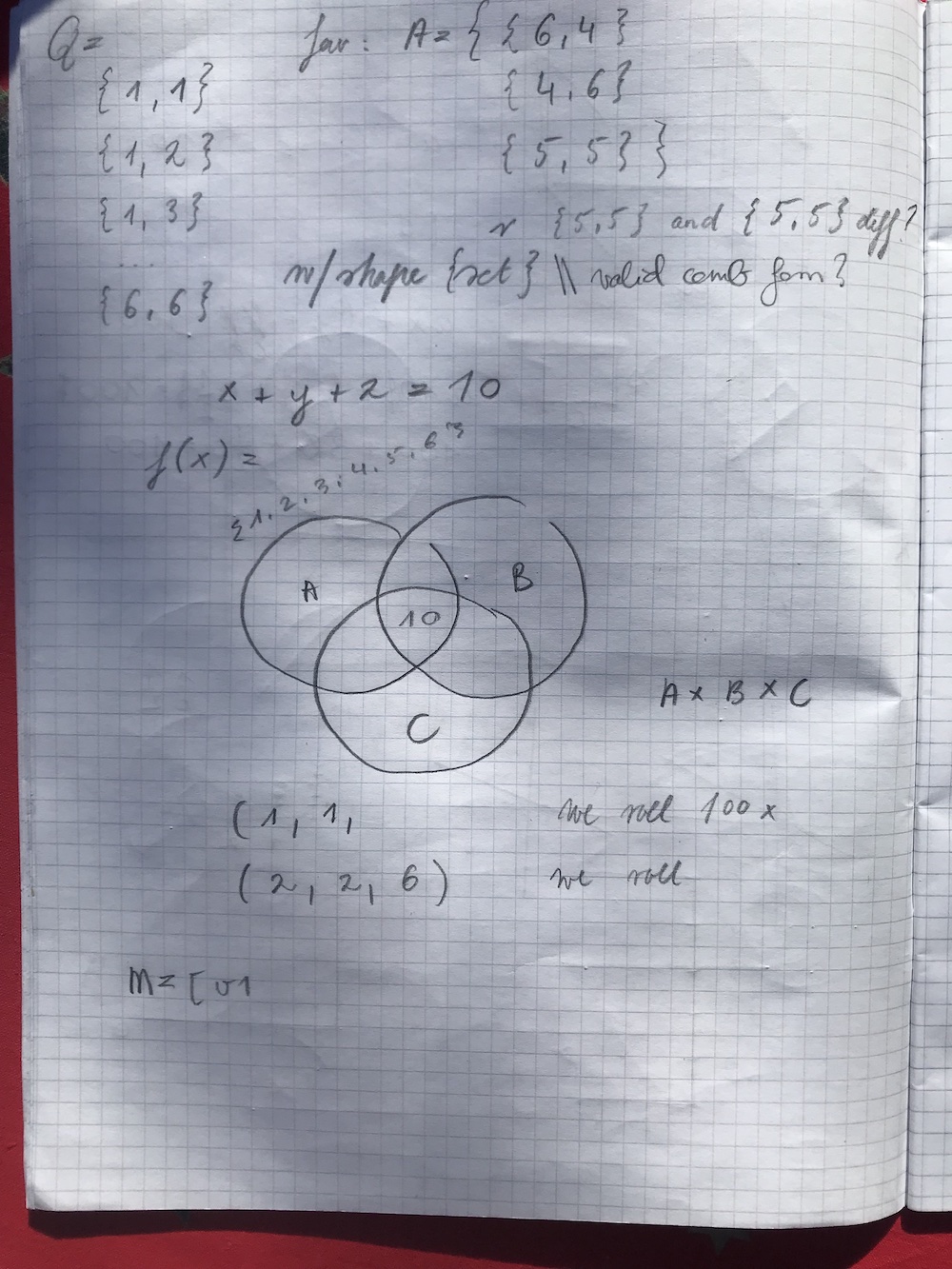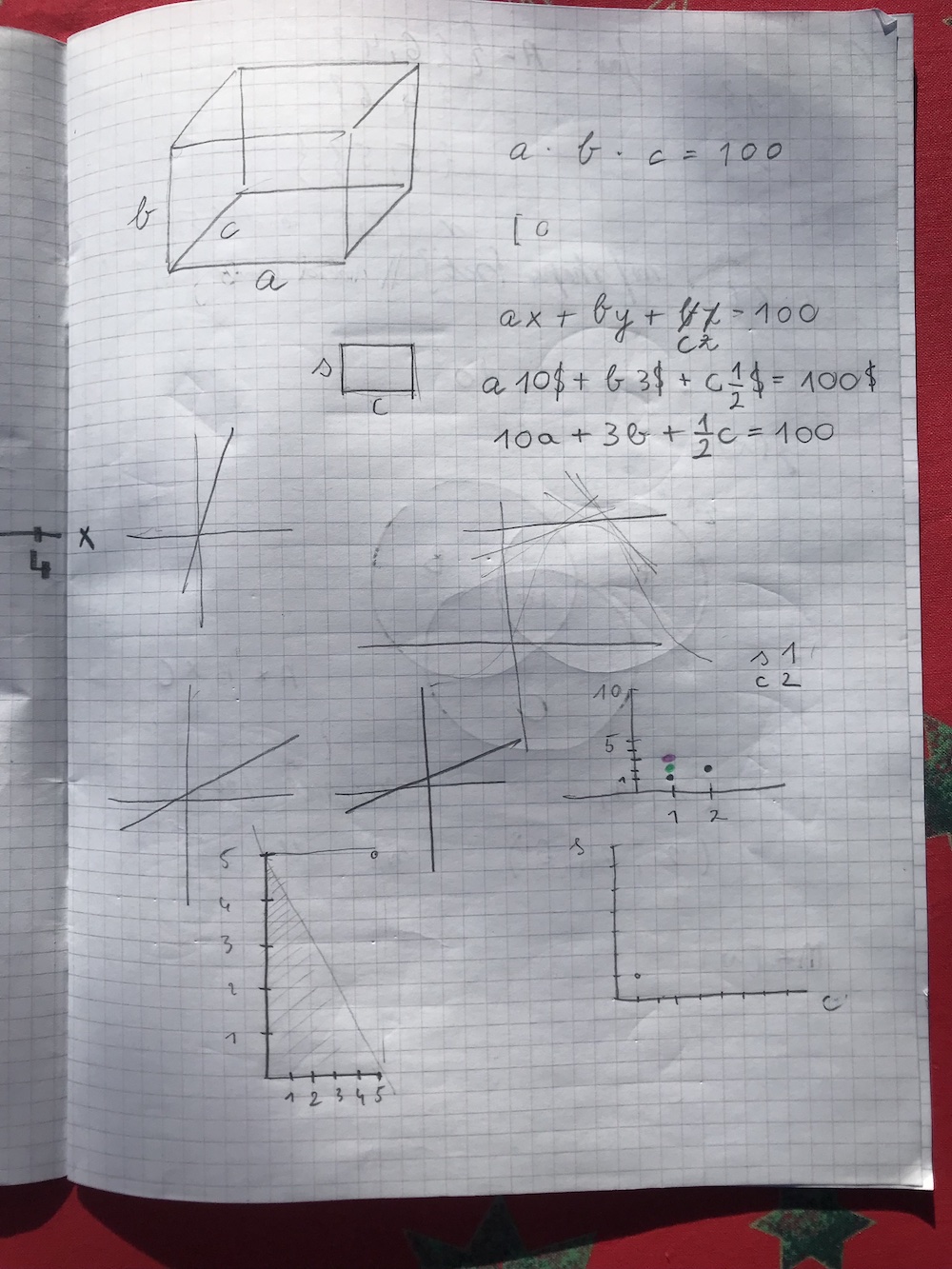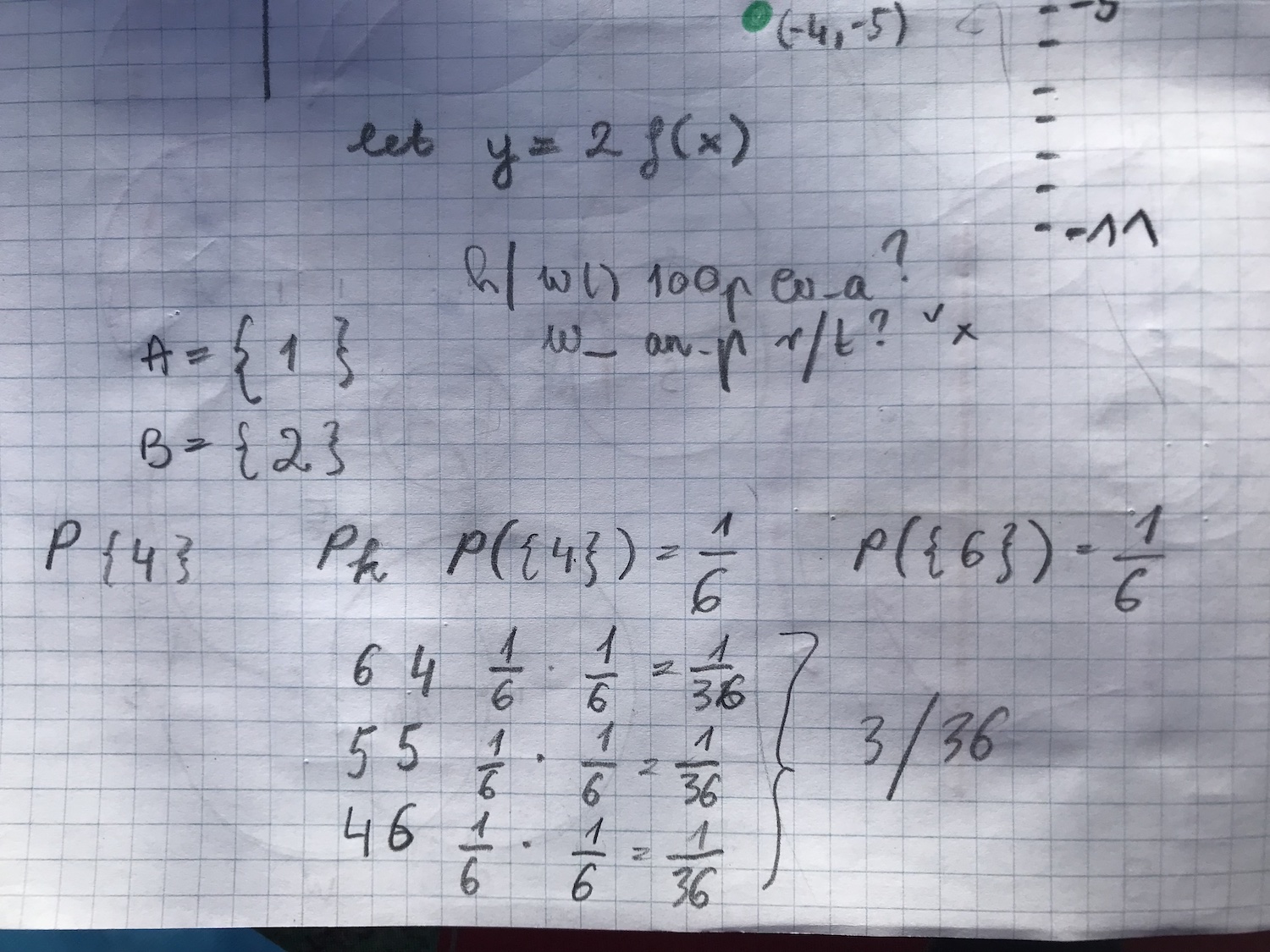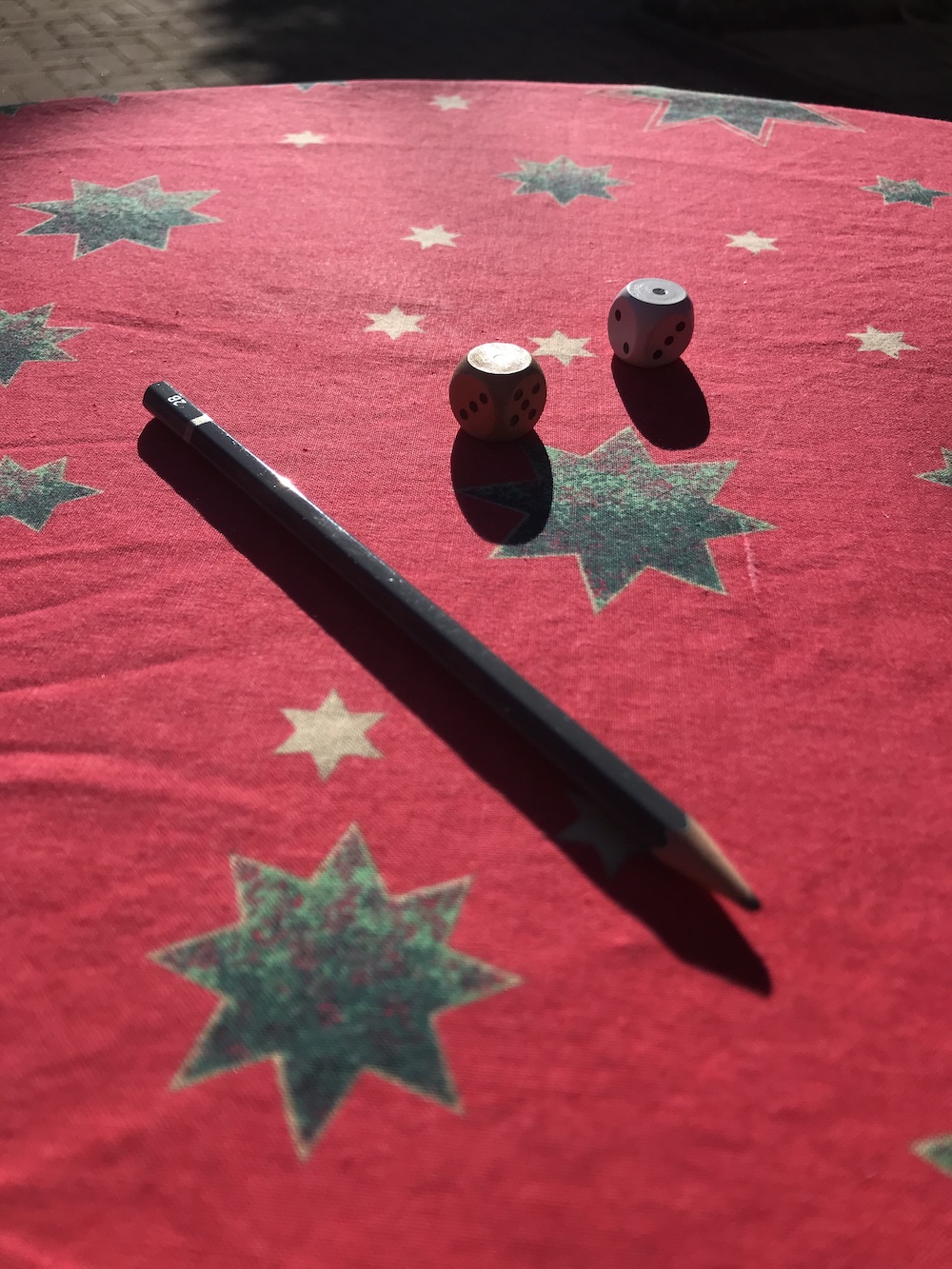Wherever I have gone, the blues runs the game
100 animals problem #

You can find more information about this topic in "Wheels, Life", specifically in chapter 2 on Diophantine analysis and Fermat's Last Theorem.1
_ shape set of valid combinations of two dice forms
x = y = sqrt(xy) where xy is the area of the paper. This results in a cubic box with volume $V = xyz = xy(sqrt(xy)) = (xy)^(\frac{3}{2}).$
How to write rolling 10, by rolling three dice once with
$V = xyz = xy(\sqrt{xy}) = (xy)^{\frac{3}{2}}.$ this form?
"the sum of the values obtained by rolling three dice will have a triangular distribution over the integers from 3 to 18, with a peak at 10"
"there are 27 different ways to roll a total of 10 (i.e., 1+3+6, 1+4+5, ..., 3+3+4), out of a total of 6^3 = 216 possible outcomes, so the probability of rolling a 10 is 27/216."
connection with variations
(1,1,1), (1,1,2)... don't sum to 10, but (2,2,6) does. How to represent this with vectors?
M = [v1; v2; ... ; v27]
= [1 1 1;
1 1 2;
...
2 2 6]
the valid multisets
 |
 |
 |
 |
Cool links and references #
-
Gardner, Martin. Wheels, Life, and Other Mathematical Amusements. New York: W. H. Freeman, 1983. p. 36-37.